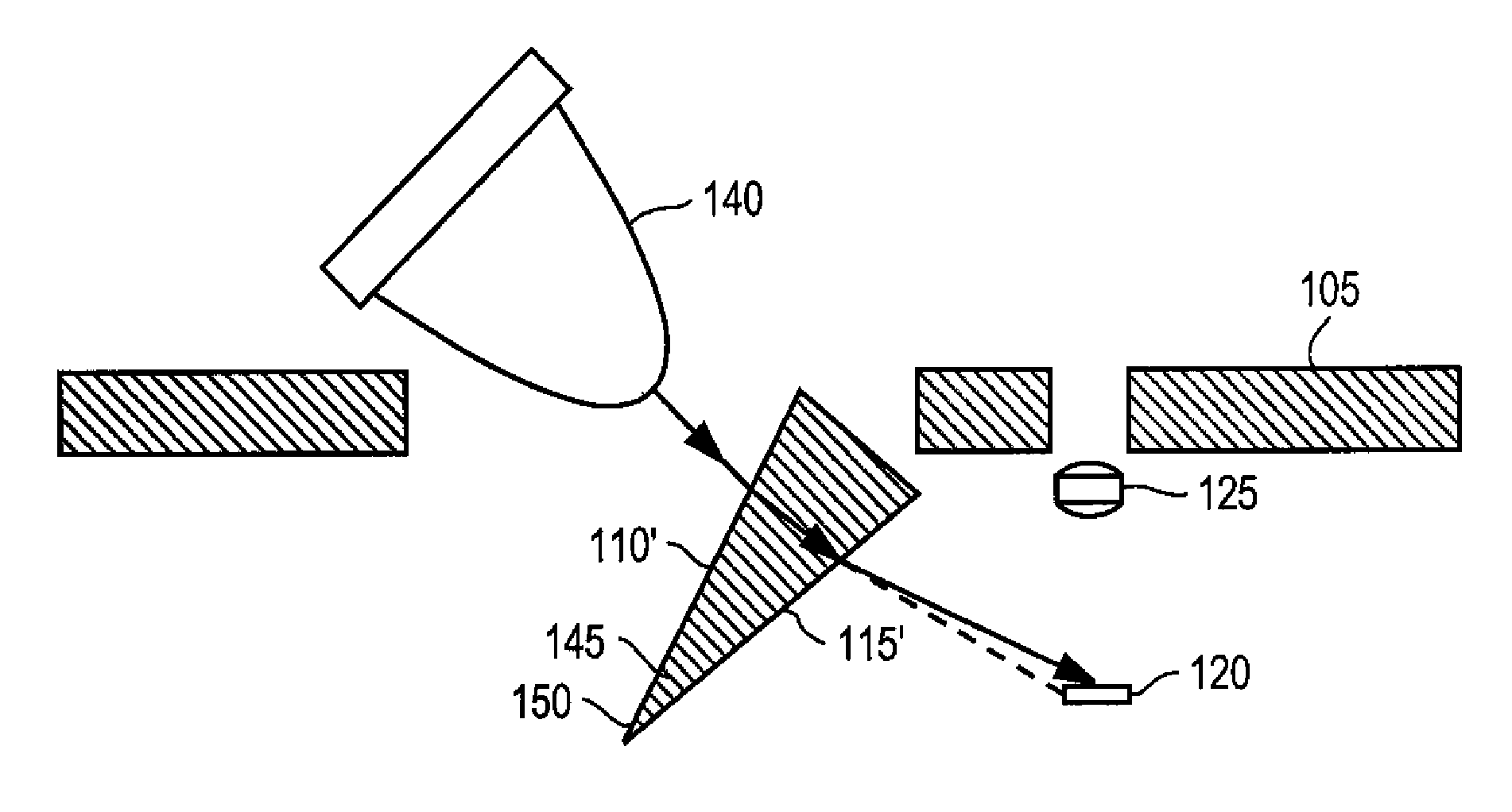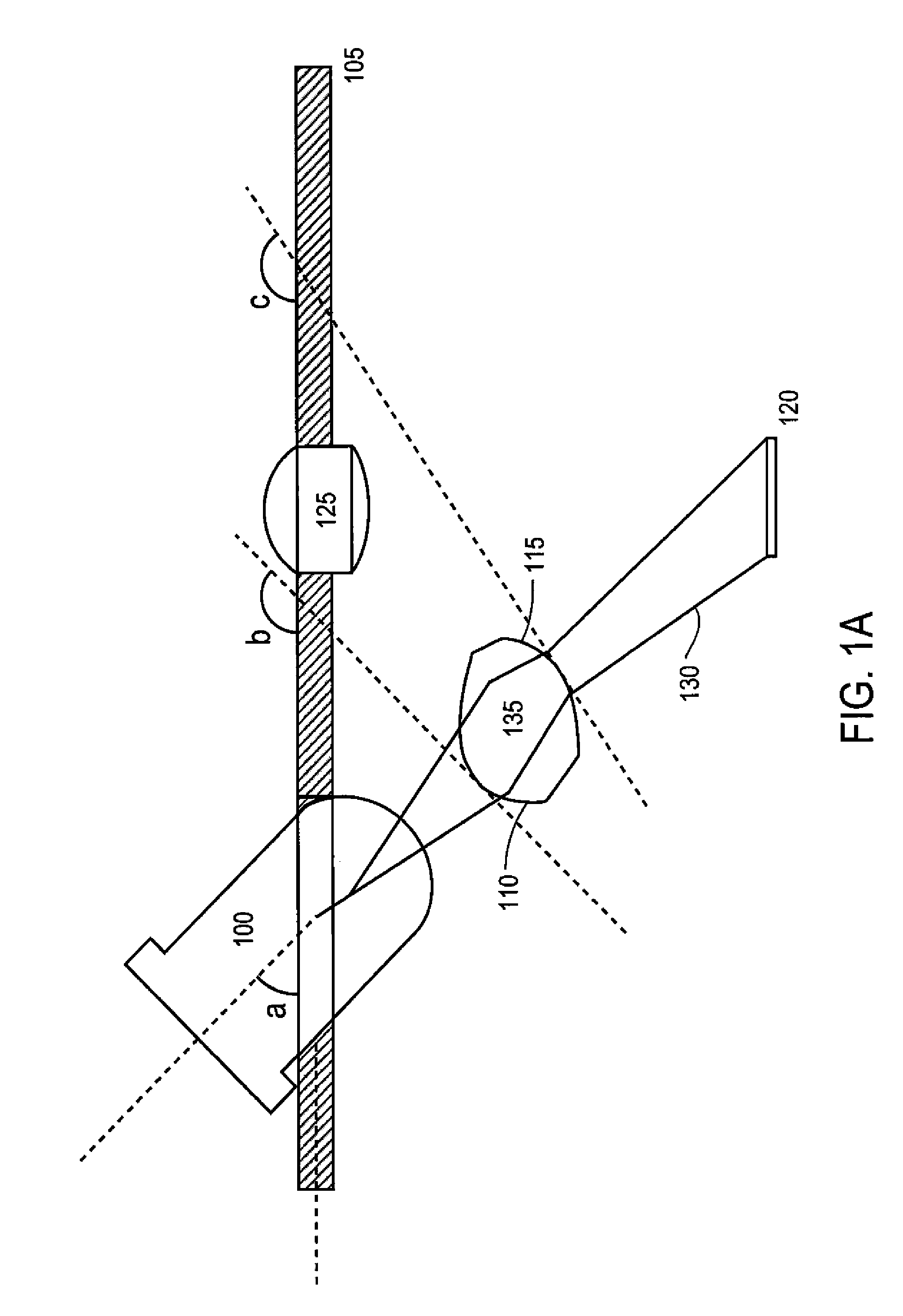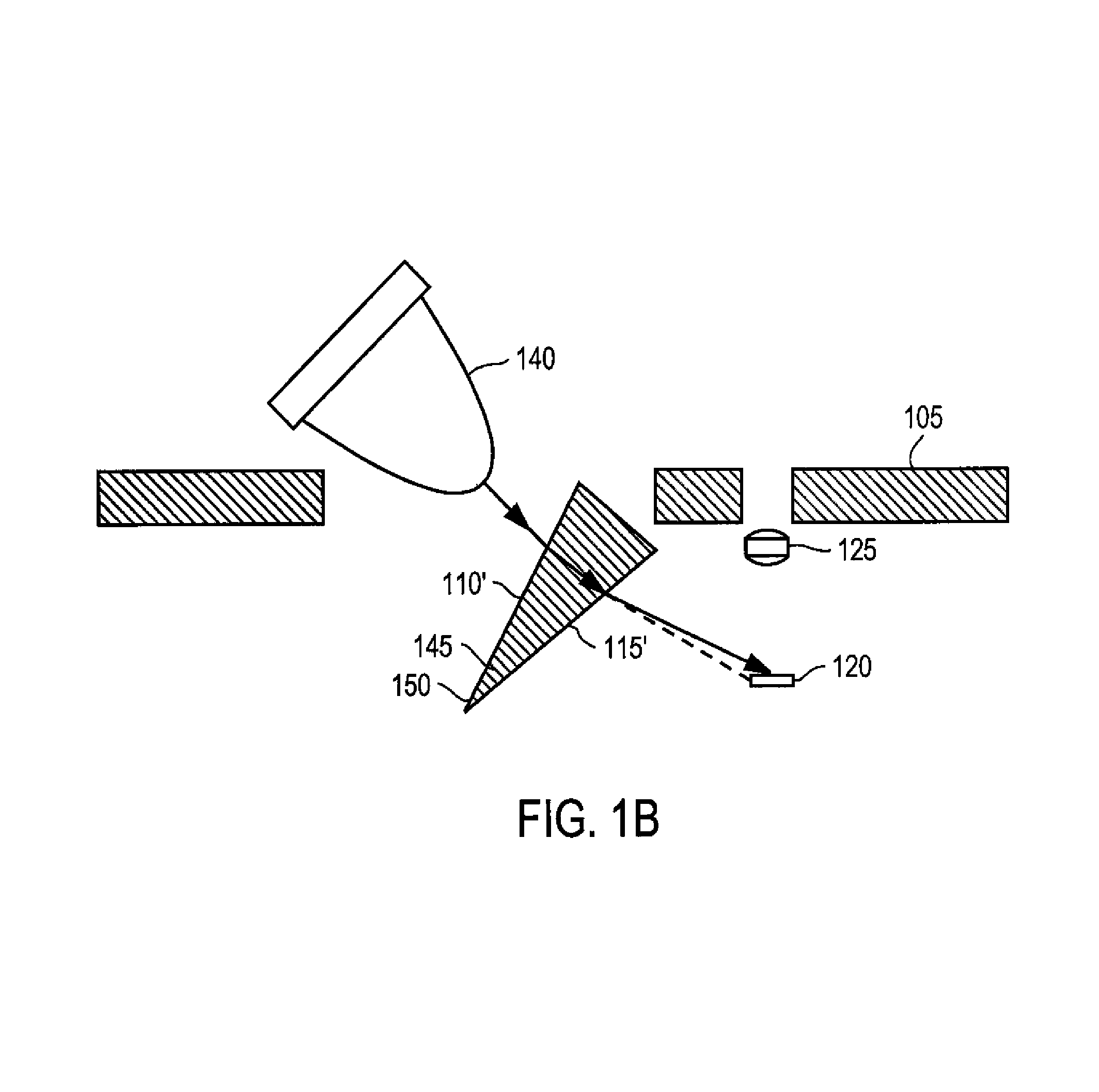Optical based performance improvement for an optical illumination configuration
a technology of optical illumination and optical based performance improvement, applied in the field of optical technology, can solve the problems of less efficient light source use, achieve the effects of improving battery life, reducing power consumption and component efficiency gains, and increasing efficiency in the illumination system
- Summary
- Abstract
- Description
- Claims
- Application Information
AI Technical Summary
Benefits of technology
Problems solved by technology
Method used
Image
Examples
Embodiment Construction
[0024]The following description of the present invention is presented in the context of an optical illumination for optical displacement detection system for use in, for example, a computer input device. In some embodiments, the principles disclosed may be implemented for use in an optical mouse or an optical trackball. One skilled in the art will recognize that the present invention may be implemented in many other domains and environments, both within the context of optical illumination for optical displacement detection, and in other contexts. Different embodiments of the present invention are now described with reference to the figures where like reference numbers indicate identical or functionally similar elements. Also in the figures, the left most digit of each reference number corresponds to the figure in which the reference number is first used.
[0025]Accordingly, the following description, while intended to be illustrative of a particular implementation, is not intended to ...
PUM
 Login to View More
Login to View More Abstract
Description
Claims
Application Information
 Login to View More
Login to View More - R&D
- Intellectual Property
- Life Sciences
- Materials
- Tech Scout
- Unparalleled Data Quality
- Higher Quality Content
- 60% Fewer Hallucinations
Browse by: Latest US Patents, China's latest patents, Technical Efficacy Thesaurus, Application Domain, Technology Topic, Popular Technical Reports.
© 2025 PatSnap. All rights reserved.Legal|Privacy policy|Modern Slavery Act Transparency Statement|Sitemap|About US| Contact US: help@patsnap.com



